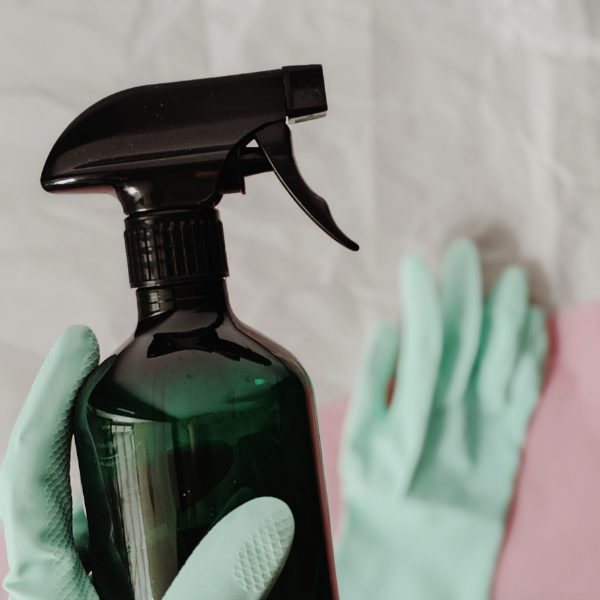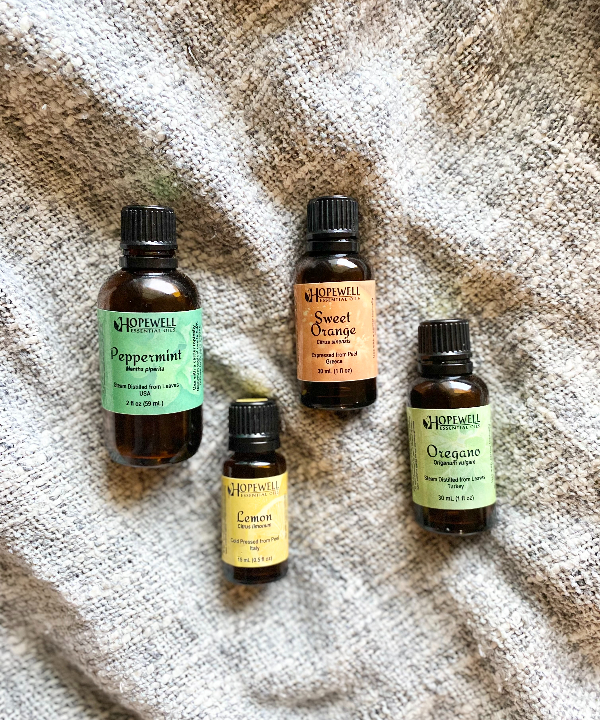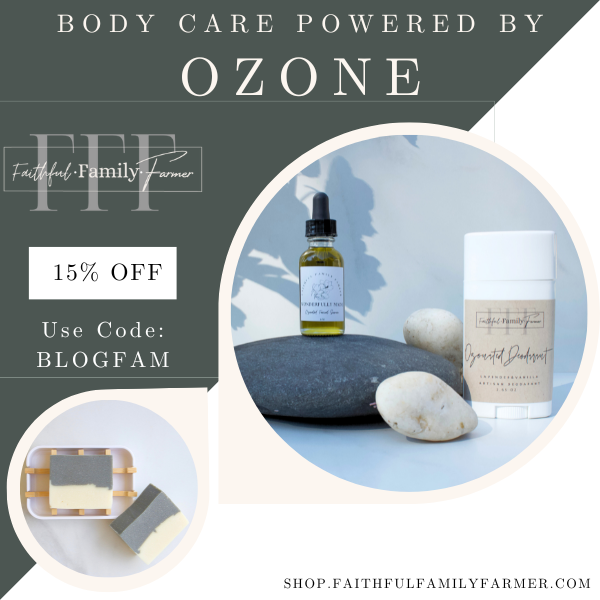3 Natural Substitutes For Bleach That Actually Work
Have you ever wondered if there were actually natural substitutes for bleach that work? I’m here to tell you that there are some great alternatives to bleach out there. You no longer have to worry about the damage that bleach can do to you or your family’s health. These natural substitutes are not only safe but cost effective too!

This is not medical advice. I am not a medical professional. The advice in this article is not intended to treat, cure, or make a medical claim. Always consult with a healthcare professional when choosing what’s best for you and your family.
I remember growing up bleach was known as the universal cleaning solution because it killed ALL bacteria. It was used for everything! When I would go to my grandma’s house, you can guarantee she had bleach water in her sink and it was used to wipe down everything in the kitchen, laundry room and bathrooms. Not once did we second guess how harmful it actually was to our health. I feel like what we see our parents and/or grandparents do growing up, we continue in our adulthood. Not really seconding guessing the safety of it. We just continue doing things because that’s how we were taught.
Not to say mawmaw or momma was a bad person because they used bleach. They truly didn’t know how harmful bleach was. We should always do research and figure out if there are natural substitutes to those products we’ve used since a child. You’d be so surprised to read just how dangerous mainstream cleaning products can be. Not only to us, but our children. If you want to learn about toxic ingredients and how to read labels, I share all of that in my Natural Living Ebook here.
Why Not Bleach?
Bleach is known as sodium hypochlorite. It has been a staple in houses all across America for years. It’s used as an antibacterial cleaner, whitening agent, control algae, mold, mildew, and viruses. There are two types of bleaches, chlorine bleach and oxygen bleach.
Chlorine Bleach
Known as sodium hypochlorite and Sodium Dichloroisocyanurate. Found in houesehold bleach and regular bleach. It breaks down the bonds that create pigments and colors and makes them nonreactive to visible light. By altering the the molecules in tough stains, they don’t reflect light the same way. This is all through a chemical process using chlorine bleach.
Oxygen Bleach
Oxygen-based bleach is considered a non-chlorine based bleach. It contains Hydrogen Peroxide, Sodium Perborate, and Sodium Percarbonate. It’s often knowns as peroxide bleach, color safe bleach, and all fabric bleach. The peroxide in the oxygen bleach breaks down after water exposure making it release free radicals that oxidize molecules so they become colorless. This is supposedly softer on fabrics.
In an article written by the American Academy of Pediatrics they reported that bleach has many health risks especially for children under the age of 5.
“An estimated 267 269 children ≤5 years of age were treated in US emergency departments for household cleaning product-related injuries. The number of injuries attributable to household cleaning product exposure decreased 46.0% from 22 141 in 1990 to 11 964 in 2006. The product most-commonly associated with injury was bleach (37.1%). Children 1 to 3 years of age accounted for 72.0% of cases. The primary mechanism of injury was ingestion (62.7%). The most common source or container was spray-bottles (40.1%). Although rates of household cleaner-related injuries from regular bottles or original containers and kitchenware decreased during the study period, spray-bottle injury rates showed no decrease.”
https://publications.aap.org/pediatrics/article-abstract/126/3/509/66124/Household-Cleaning-Product-Related-Injuries?redirectedFrom=fulltext
In this article it talks about the dangers of bleach to tissues within the human body which could lead to shortness of breath, eye irritation and sensitive skin.
Bleach reacts with biological tissues, causing irritation and cell death by protein denaturation. This reaction is most severe for the more sensitive tissues such as the respiratory system and eyes and less severe for more resistant tissues such as GI tract (which is accustomed to low pH) and skin (which is adapted to be in contact with the environment).
https://www.ncbi.nlm.nih.gov/books/NBK441921/
As you can see, bleach may be great for killing bacteria and viruses, but it is also super harmful to not only children but sensitive tissues within the human body at any age. Why have something in your home if it is borderline safe. I’d rather stay safe and toss the bleach since I know there are safe alternatives that are safe to be around. It is always a great idea to do some research and find a great alternative to any chemical product that is marketed as safe for household use.
What To Use Instead Of Bleach?
Great news! There are so many natural cleaners that you can use in your home that will work just as well as bleach. I have learned of so many great alternatives over the past 6 years and here are my top 3!

Force Of Nature
This has been such a blessing in our home. This is our favorite natural bleach alternative without all the harsh chemicals! We use Force of Nature for literally EVERYTHING. Our farm, toilets, counter tops, floors, bath tubs, windows, hand sanitizer etc. Force of Nature uses electricity to convert salt, water & white vinegar into a super powerful multi-surface cleaner and EPA registered disinfectant. It kills 99.9% of germs and can replace all of your cleaning products – bleach, sanitizers, kitchen, glass, bathroom cleaners, deodorizers and disinfectants. It’s not just better for your family and your wallet, but also for the environment! The best thing is, they send a reusable plastic bottle so you can completely eliminate single-use plastic bottles. It is toxin free and is safe around children and pets as well.

Essential Oils
Essential oils are a great way to create your own DIY cleaner at home. There are so many essential oils that are considered antibacterial, antiviral and natural disinfectant. They can be used for general household cleaning such as the kitchen, bathroom, and on common household surfaces without all the harmful effects and toxic chemicals. Here are some great oils you can use in your DIY cleaner:
- Tea Tree (antiviral, antibacterial)
- Citrus oils such as Lemon essential oil, Orange, Grapefruit
- Oregano, Clove, Peppermint, Lavender, and Turmeric
You can take 2 tablespoons of castile soap, 2 tablespoons baking soda, 25 drops of tea tree, 15 drops citrus oil, 2 cups of distilled water. I found this great recipe from Natural Living Family. We personally love using oils from Hope Well. I love that it’s not multi level marketing and their oils are tested for purity. They also have GREAT prices!

Lemons
This one may sound wild to some, I know it did for me at first! Lemons contain citric acid which is great for removing stains and odors. You can use a lemon to scrub your sink to get off pesky stains. All that’s needed is half of a lemon. Take half of the lemon, sprinkle sea salt in your sink and gently scrub away stains. I’ve seen others do this with pots and pans as well, but cannot confirm if it truly works for that. Lemon juice can be used to clean grout, all that’s needed is lemon juice in a spray bottle. Spray stained grout and let it sit for 10 minutes before scrubbing. You can also add a half cup of lemon to your dirty laundry in the washer machine to brighten and take away stains from clothing!

As you can see, it’s so much easier to replace bleach than you would think! Most people rely on bleach because it’s considered the best antibacterial cleaner on the market. It really has a lot to do with marketing in my opinion. I’ve been bleach free for the past 8 years and have been perfectly fine. These natural alternatives have worked perfectly for our family and many others I know. It also makes me feel great knowing my children can be around our household cleaning products and I don’t have to worry.
It’s always fun to do things the natural way knowing your health is taken care of. Have you made the switch to a non-toxic bleach alternative in your home? I’d love to hear what you use to clean to create your healthy home!


My grandmas laundry room always smelled of bleach too 🥹 memories. So glad we know better now though! I always forget about lemon for laundry! Thank you for the tips!
Hi Brittany,
Haha yes grandma loves her bleach! You’re so welcome 🙂
Great post! I haven’t used bleach for years because of the harm you mentioned above in your blog post. I like to make my own cleaner using equal parts filtered water and either white vinegar or homemade apple scrap vinegar! It also does a great job of cleaning. I’ll also use a half cup of white vinegar in my washing machine occasionally (to the rinse cycle tray) to give whites an extra boost!
Hi Rebekah,
Ah yes, great idea! I’ve heard of vinegar for laundry but haven’t tried it out. I will have to give it a try!
Very interesting. I will admit that I use bleach because I’ve always used it. My daughters have shared some but not alternatives.
HI Barbra,
Yes, for sure! Most people are so used to it, one step at a time 🙂
Awesome! I just wrote a post about lemons (it’s not published yet) and I was impressed at how much more I learned about the effectiveness of using it for cleaning and reducing odor! I love the information in your post.
Hi Carol,
Great minds think alike haha! Thanks so much!
I was looking for this! Thanks. Going to make one with essential oils today!
HI Stephanie! I’m so glad to hear that, I hope you enjoyed 🙂
Thank you so much for sharing this, definitely very helpful!
Hi Annette, I’m so glad you found it helpful!
I still use bleach but not the way I was raised too. Very informative post, thanks for sharing!
Hi Dusty, you’re so welcome, I’m glad you enjoyed!
Thank you for sharing this! I am just now getting into swapping out my cleaners for healthier alternatives so I appreciated this post!
You’re so welcome! I’m so glad you enjoyed!
Great ideas to replace bleach! The strong smell of bleach just screams, “I’m not good for you!” lol. I’ll have to try these out instead.
Haha you are so right! I always knew something wasn’t quite right with bleach!
This is great! I’ve had a hard time finding something as good as bleach for my bathrooms, I have 4 young sons 😅. Can’t wait to try this, thank you!
While I don’t have sons, I do have two daughters who have no problem making a huge mess. I love force of nature as a bathroom cleaner and I will say, my 5 year old loves to make it for us. It’s a little science project for her haha.
What a great post! No need to use toxic bleach with these alternatives!
Thank you so much, I’m so glad you enjoyed 🙂